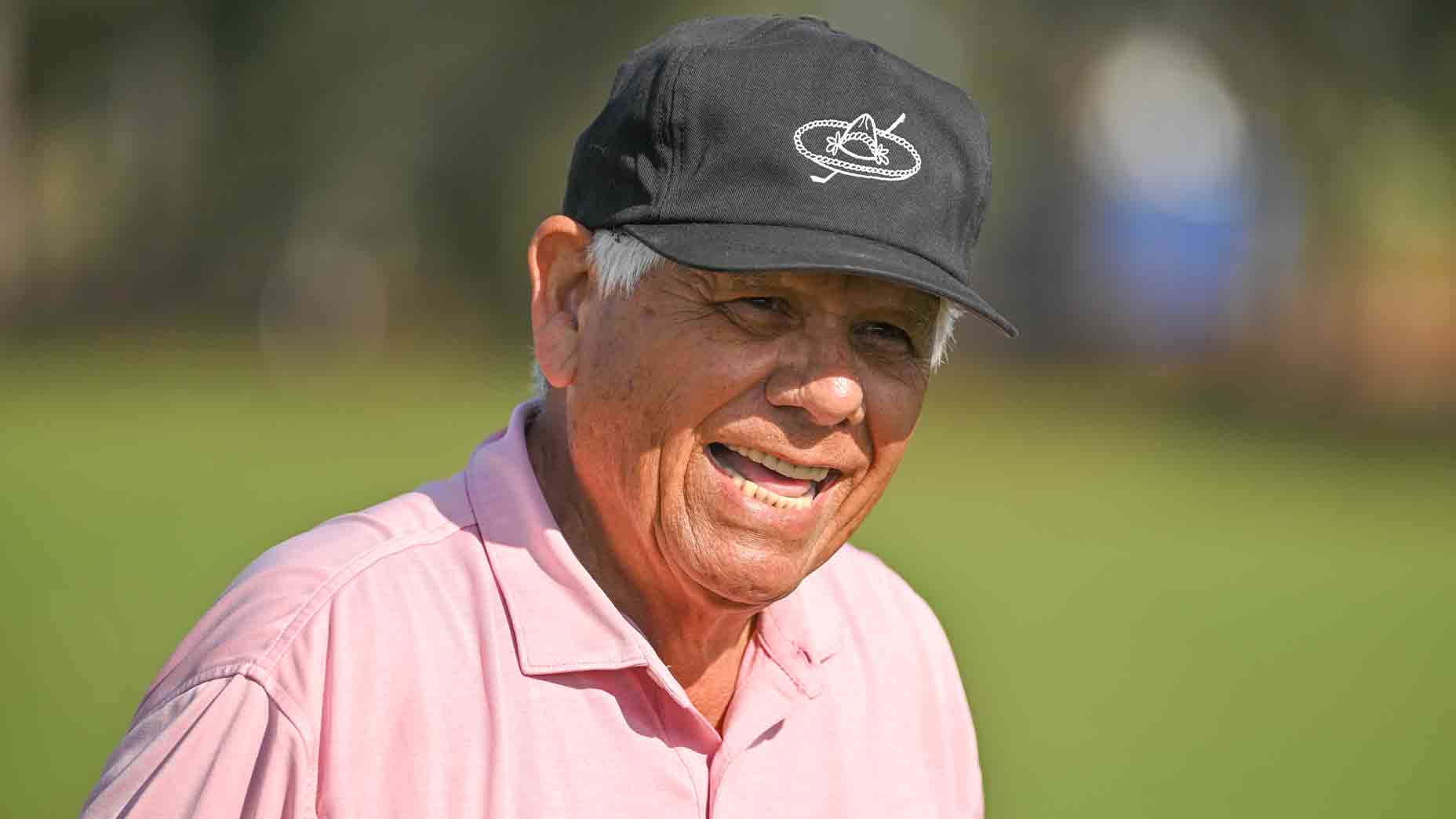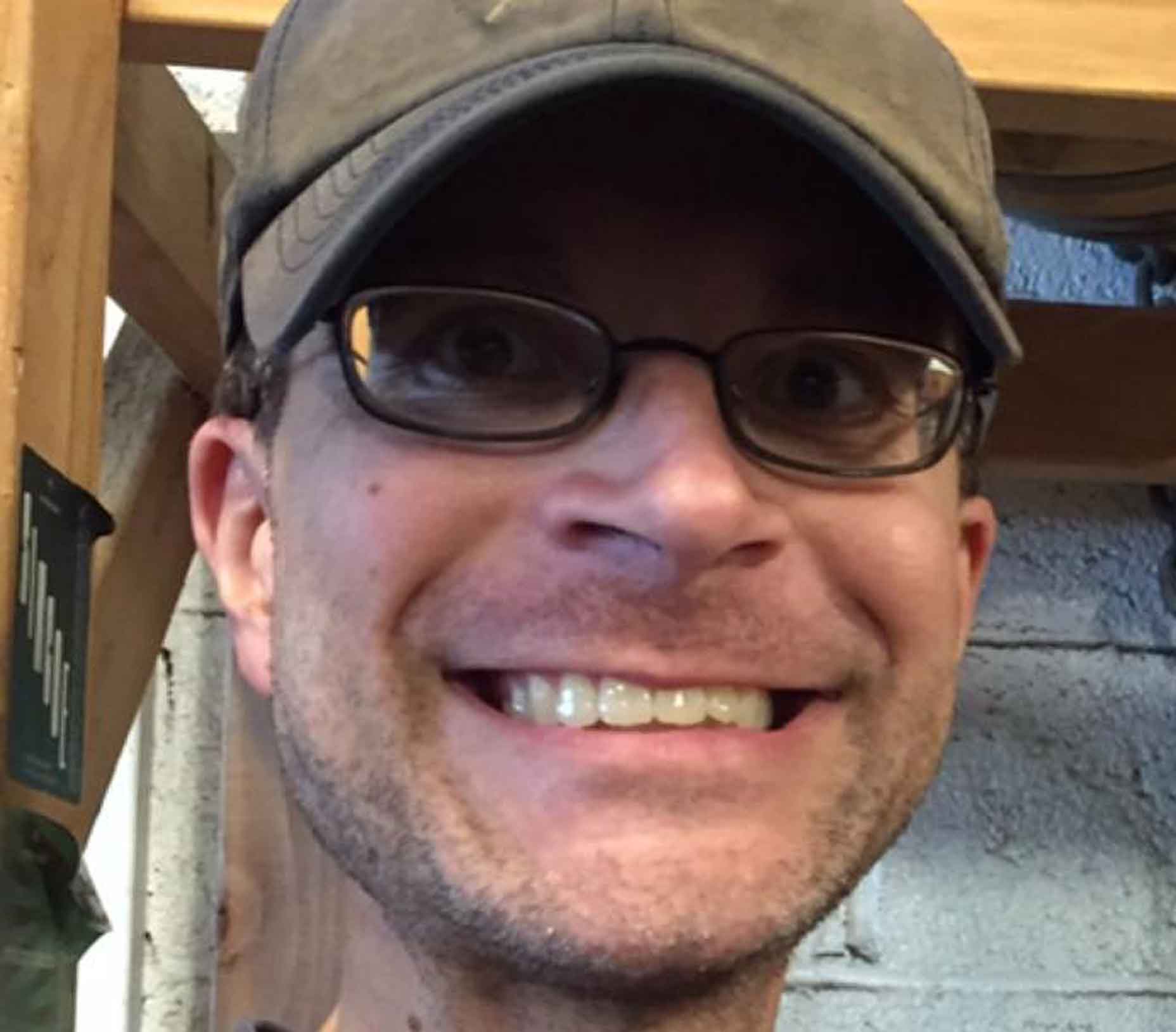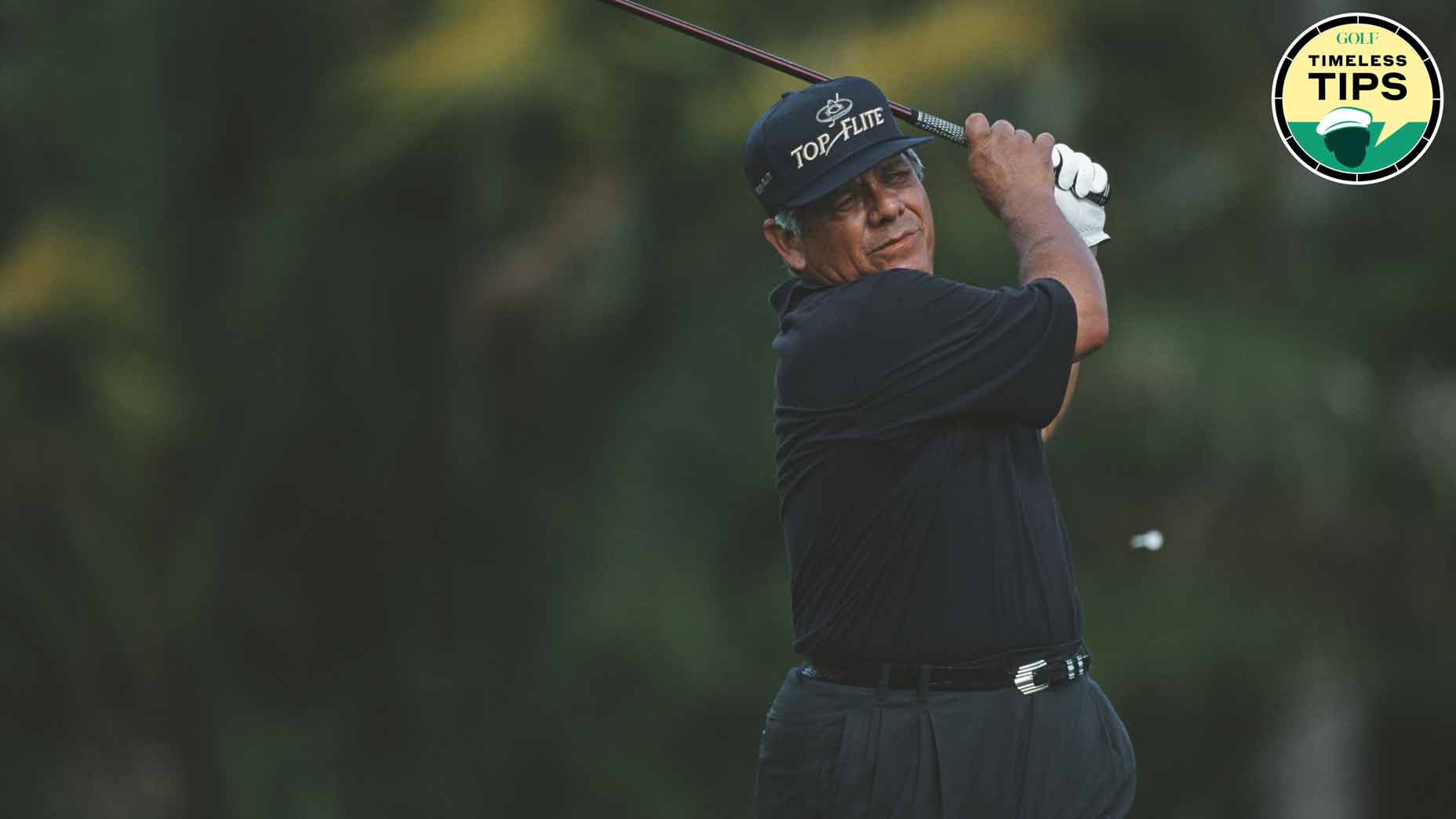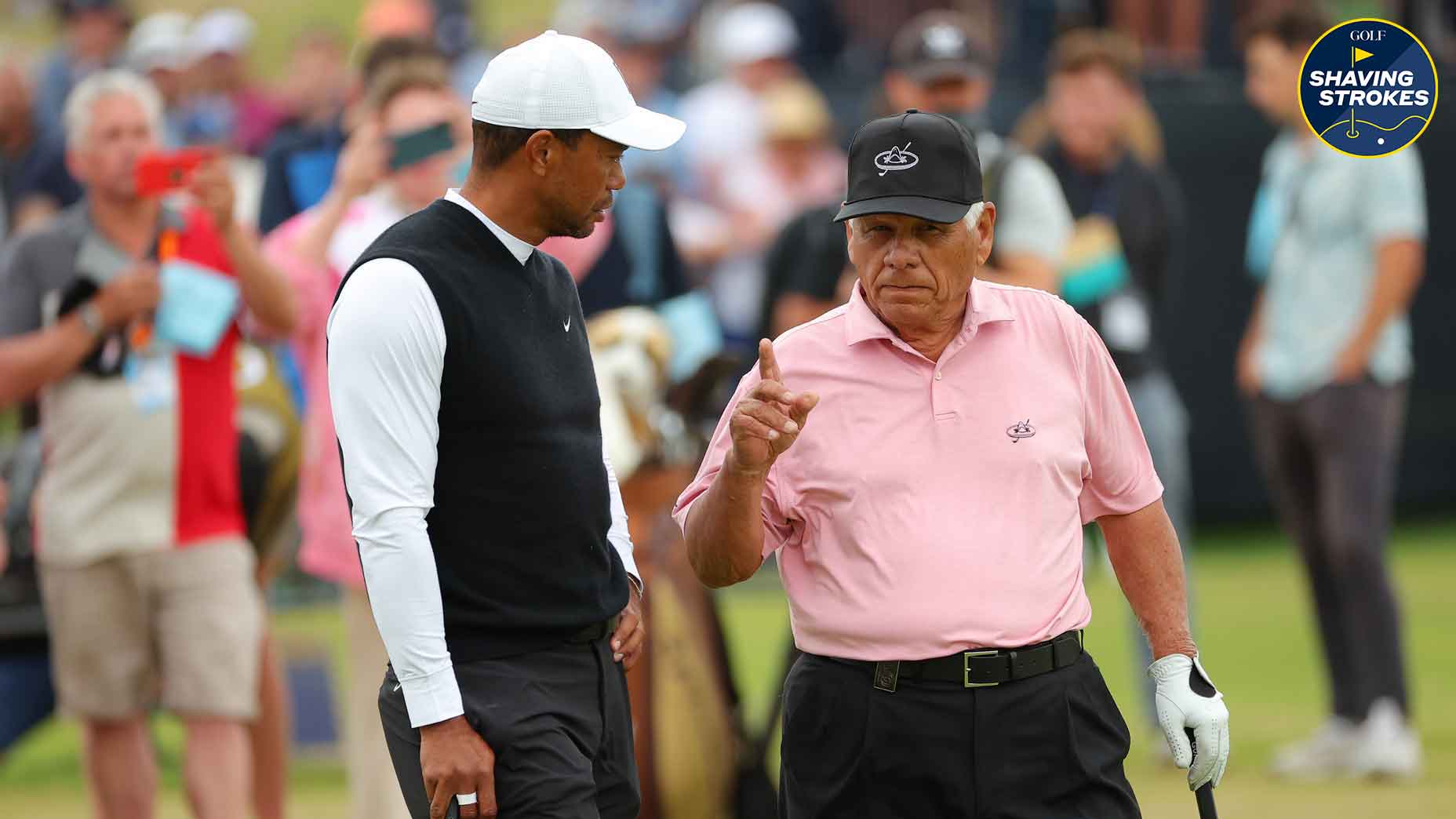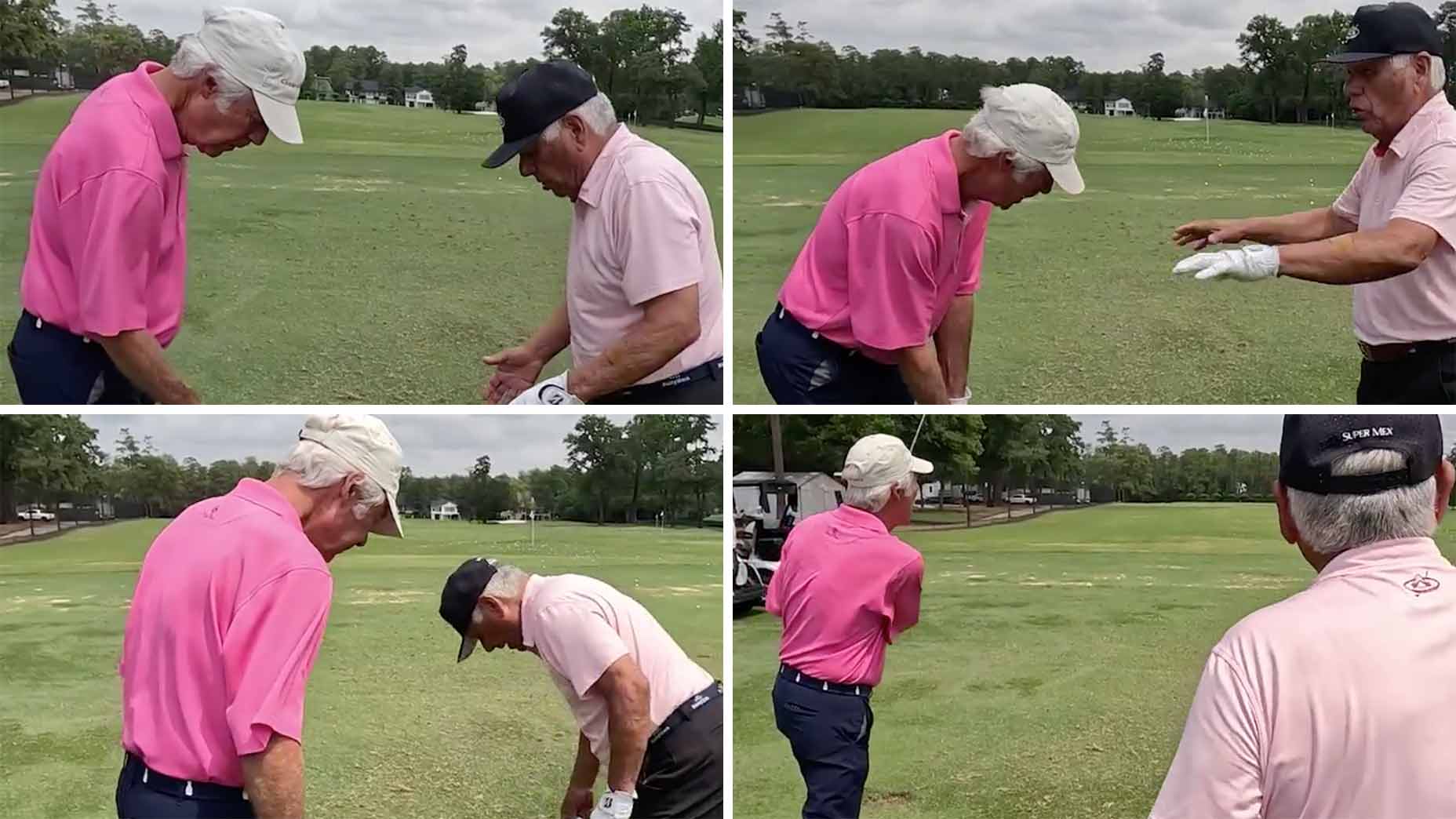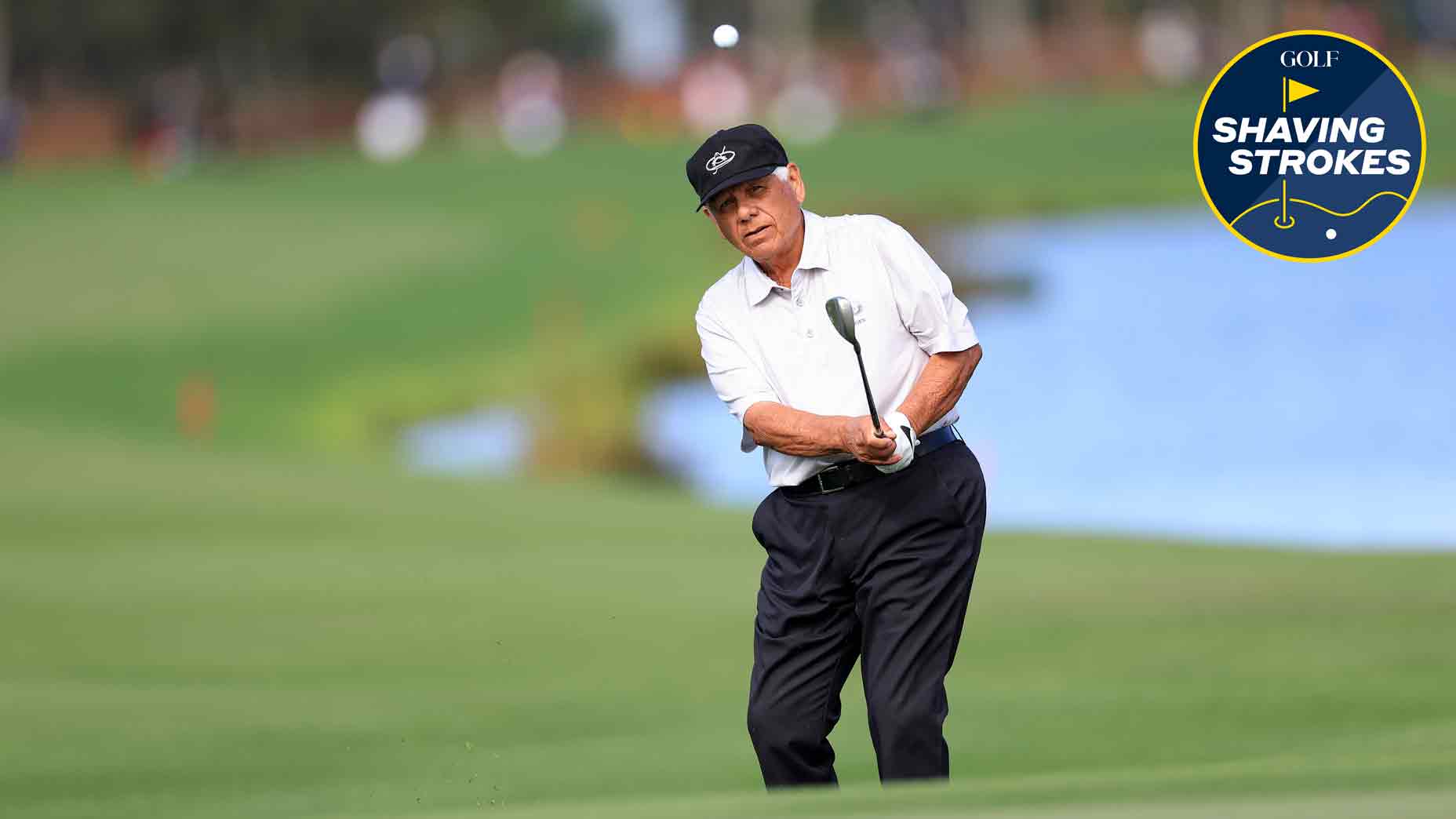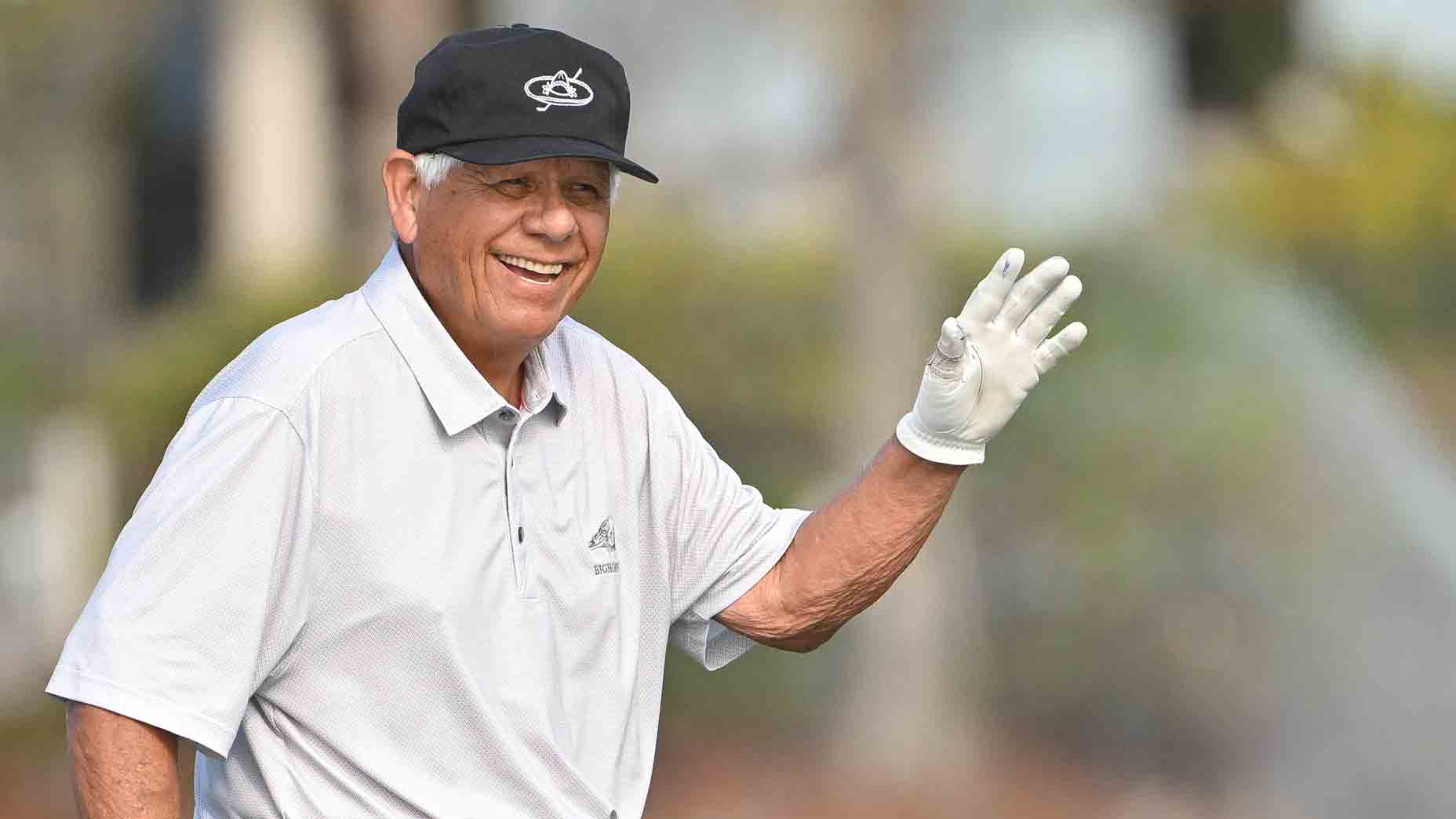‘They can’t use the damn thing’: Lee Trevino says this tech wrecks high-handicappers
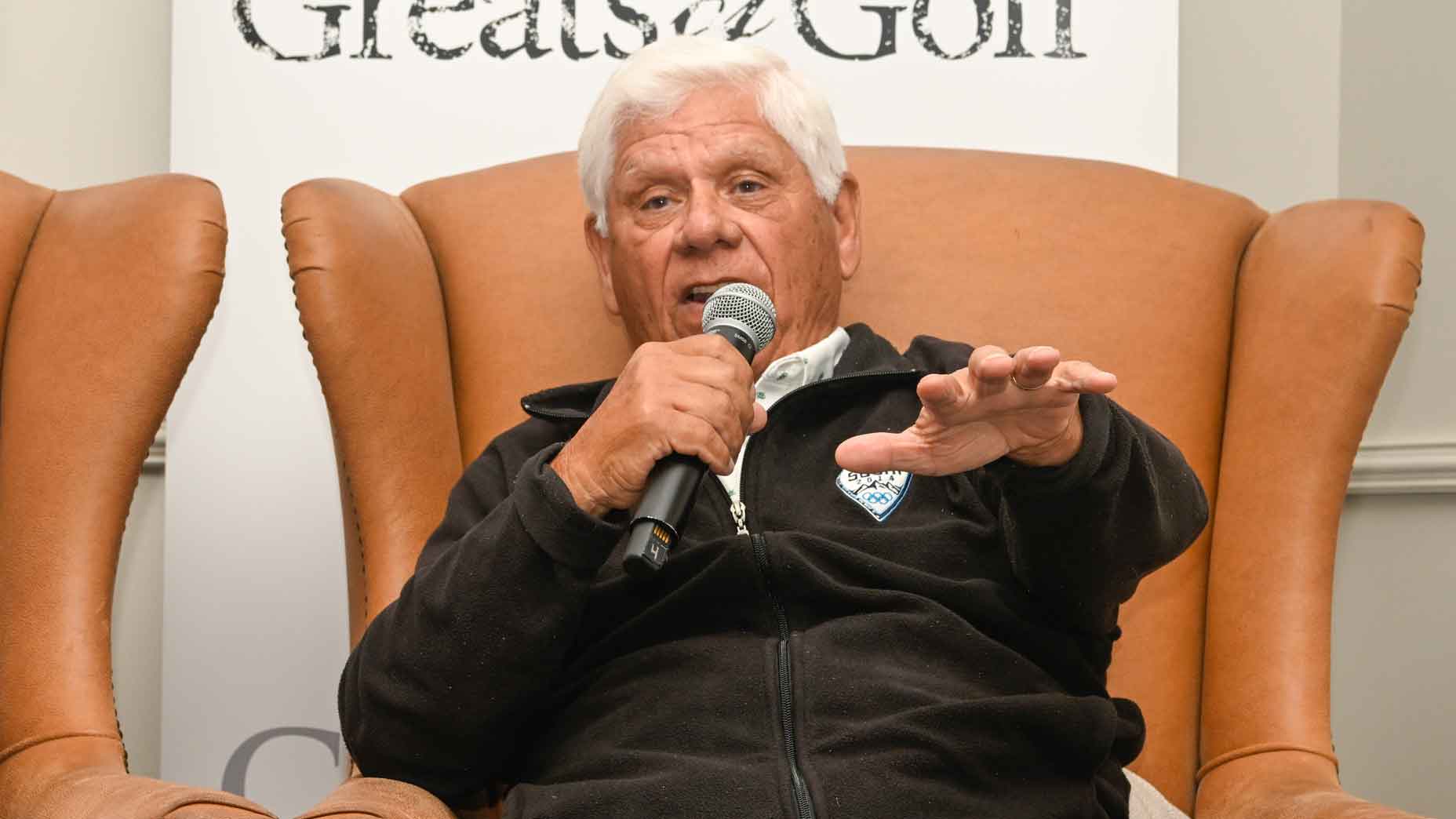
Lee Trevino on Saturday at the Folds of Honor Greats of Golf event.
Getty Images
Lee Trevino was told that Byron Nelson believed that the modern golfer had two advantages over the older generation. Trevino agreed with his fellow legend on the first. Yes, courses today are so much more immaculate.
And the second?
Trevino had some thoughts, as only he can convey.
The conversation came up this week on the A New Breed of Golf show on SiriusXM. Host Michael Breed, a longtime and acclaimed teaching pro, had relayed the Nelson thought to Trevino. And before we get into their fascinating exchange, we must note a couple of things. First, you should listen to Breed’s show regularly, and you can do so here. And Trevino, as good as he can turn a phrase, can just as easily translate the short game. Google it. “Lee Trevino short game” is a treasure trove. He’s a wedge whisperer.
And on his show, Breed asked Trevino this:
“I remember having a conversation with Byron Nelson at Augusta National, and he said there were two things in his era of player that the advantage that the modern player has over his era of player — one, was to your point, the conditions of the golf course and trying to figure out a way if you had a flier lie in the middle of the fairway, and the second was the 60-degree wedge. You are well known for your wedge play. How valuable, how important is the 60-degree in today’s game for this modern player versus when you were out playing with that big, Wilson, thick sole, R-90 wedge that was easy to get out of a bunker but very difficult to hit high-lofted shots around the greens with?”
Trevino’s answer started nonchalantly.
“One of the best clubs that I ever had, believe it or not, was the Sandy Andy,” he said on the show. “It had about 22 degrees of bounce on it. But you know, I played my hands forward and the ball back so actually the bounce on the club was only like 13 by the time I hit the ball. And that’s just the way that it was.”
And then Trevino got into the 60 degree, which started to become popular in the ‘80s.
“But the 60-degree wedge is the worst thing that ever happened to a high-handicapper, because he can’t use the 56 yet,” he said on the show. “I mean, he’s got to learn to use the 56 before he goes to a 60. I don’t know why they’re carrying a 60. They can’t use the damn thing. They’re always short with it.
“The reason they’re short with it is, if you play with an amateur that has an eight or over, if he pulls a 60 out, he’s generally short; he’s always short. And the reason for it is because they don’t realize how much loft is on this thing and they tend to swing at it the same speed they do the 56. And it’s not going to go anywhere. I mean, it won’t go anyplace. Tight lies, now all of a sudden, now they’re getting these little — built the way that the architecture is with the greens dropping off and everything, that’s the worst club you want to use around there is the 60 because the grain’s against you. And that club is sharper; it doesn’t have as much bounce on it. The secret is to open the 56 wide open to get a little more bounce and then rotate it; close the toe a little bit.”
Trevino had more guidance.
“I’ll tell you how I do it,” he said on the show. “I take the club square. You can use this. I’m going to give you permission to use this.”
“Oh, believe me, we got this recorded,” Breed said.
In short, Trevino said you don’t need speed to get out of a bunker.
“We need rotation,” he said on the show. “And the reason that they need rotation is simply because they keep the sand on the clubface longer. And the longer that they can keep the sand on the clubface, the farther that the ball will come out. The problem is that people open the clubface and then grip it normally. And then when they swing at it, they even open it more; or they try to hold it open.
“OK, the secret to a person with a slow bunker play with a club that can’t get out is to take the wedge, hold it in the air, close it, take your grip, and then open it with your forearms and wrists. In other words, roll your arms wide open. And you will feel the rubber-band effect. You will feel the tension in the forearms. And what that does when you come down to the ball, it releases by itself; you don’t have to manually do it. …
“And then what happens is, you play it back a little bit, and you hold the club — you grip it with it a little shut and then you rotate your hands wide open to where your right hand is almost pointing up in the air, the palm of your right hand, holding onto that club. And you will feel the tension in your arms and forearms. And then when you come down, the club will automatically close; it won’t open anymore. And then you have a shot at getting out of that bunker.”
With that, Trevino’s lesson was over.
“And if it works,” he said on the show, “just send the check to Dallas, OK?”
Editor’s note: To listen to Trevino’s entire appearance on the show, please click here.


